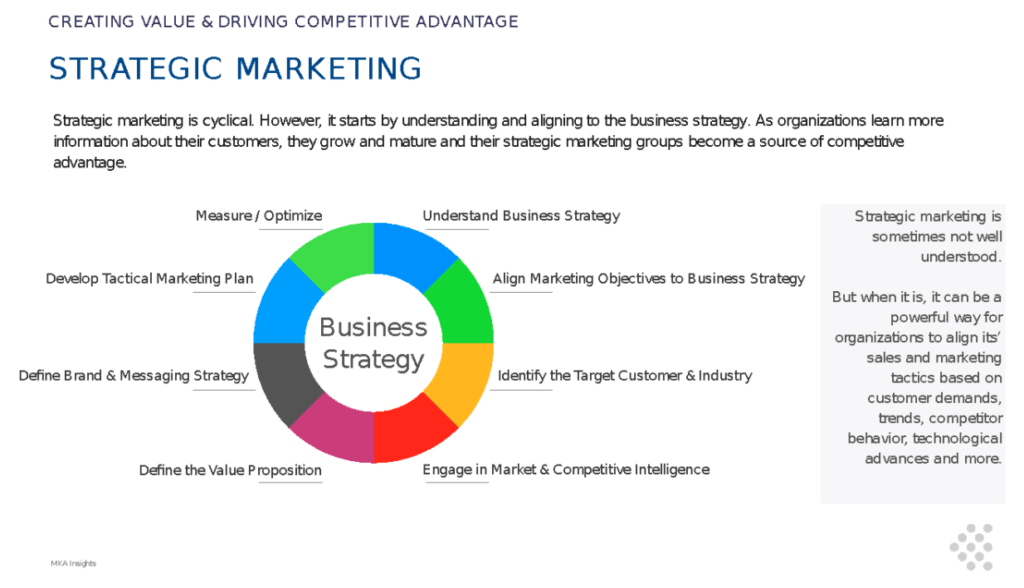What is Strategic Marketing?
By: Kiran Chin
June, 2020
Share on linkedin
Share on twitter
Share on facebook
Share on email
Share on print
WHAT TO READ NEXT
Strategic value of marketing

Strategic marketing is often misunderstood. But when it is well understood, it can be a powerful way for organizations to align its sales and marketing tactics based on customer demands, industry trends, competitor behavior, technological advances and more.
Step 1 – Corporate Objectives: For starters, strategic marketing is cyclical. It starts by aligning marketing objectives to business corporate objectives by asking the questions: how can we deliver on those corporate objectives? All functions within a business work to serve corporate objectives – none moreso than marketing.
Step 2 – Marketing Objectives: Once the business strategic objectives are well understood, organizations can begin to think about their marketing objectives – what big initiatives will the marketing organization undergo to support growth, expand into new markets and sustain the installed base? Fortunately for marketing, many of the corporate business objectives are in fact marketing objectives.
Step 3 – Baselining: While many organizations seem to jump right into a plan of attack, it is important to identify (on paper) – who is the target customer and which geographies are being targeted? This form of grounding is essential to ensuring that the subsequent ideas and ultimate plan achieve its intended goals.
Step 4 – Market Intelligence: If the goal is to go after an industry, customer or market segment that was previously not a target then the next step in strategic marketing is to understand as much about the target customer, industry, geographies, buying behavior, price sensitivities and any information that may prove useful in building a strategic marketing plan.
Step 5 – Alignment: Once the target is better understood, it is important to align the firm’s capabilities with the customer through a process commonly termed “value proposition”. This value proposition puts to paper the who, what and “so what?” that are essential in ensuring that what a company has to offer is aligned with how and why customers will buy.
Step 6 – Positioning: While a popular and visible effort that many marketing organizations engage in is brand and message strategies, what many may not fully realize is that this is part of the positioning that needs to occur to ensure that the brand, product and company are perceived as intended by the company. This requires some discussion and understanding through various brand strategies that are intertwined with message strategies. The brand is often the “look/feel” whereas the messaging strategy pulls the content together that will compel a customer to want to learn more.
Step 7 – Tactical Planning: One of the last efforts to engage in is an actual plan of how the firm will go to market. This tactical plan may include how many trade-shows, cost, where along with digital marketing campaigns, email marketing and social media strategies. However, without the who, what, where, why and “so what” that precedes the planning process – jumping in directly at Step 7 can often have limited results.
Step 8 – Execute / Measure / Optimize: As organizations execute these tactical marketing plans, they should constantly be refining them and measuring success. Metrics of success are often difficult to quantify for marketers who are often able to deliver intangible benefits such as brand awareness. However, each tactical effort can be measured for performance and ROI.
Repeat: No sooner is the plan starting to execute, when the business decides to shift strategy or add new strategic objectives, which require resetting objectives and engaging in another strategic marketing exercise.



